How to Promote Generalization of ABA Therapy Skills Across Different Settings
Strategies for Ensuring ABA Skills Transfer to Everyday Life
Understanding Generalization in ABA Therapy
Generalization in ABA therapy is a cornerstone for ensuring that learned behaviors and skills transfer beyond the controlled therapy environment to real-world applications. For learners, particularly those with autism, the ability to adapt skills across different settings, stimuli, and people is crucial for achieving long-term independence and functionality. This article explores strategies for fostering effective generalization in ABA therapy, ensuring skills learned translate into meaningful everyday use.
Defining Generalization in ABA Therapy
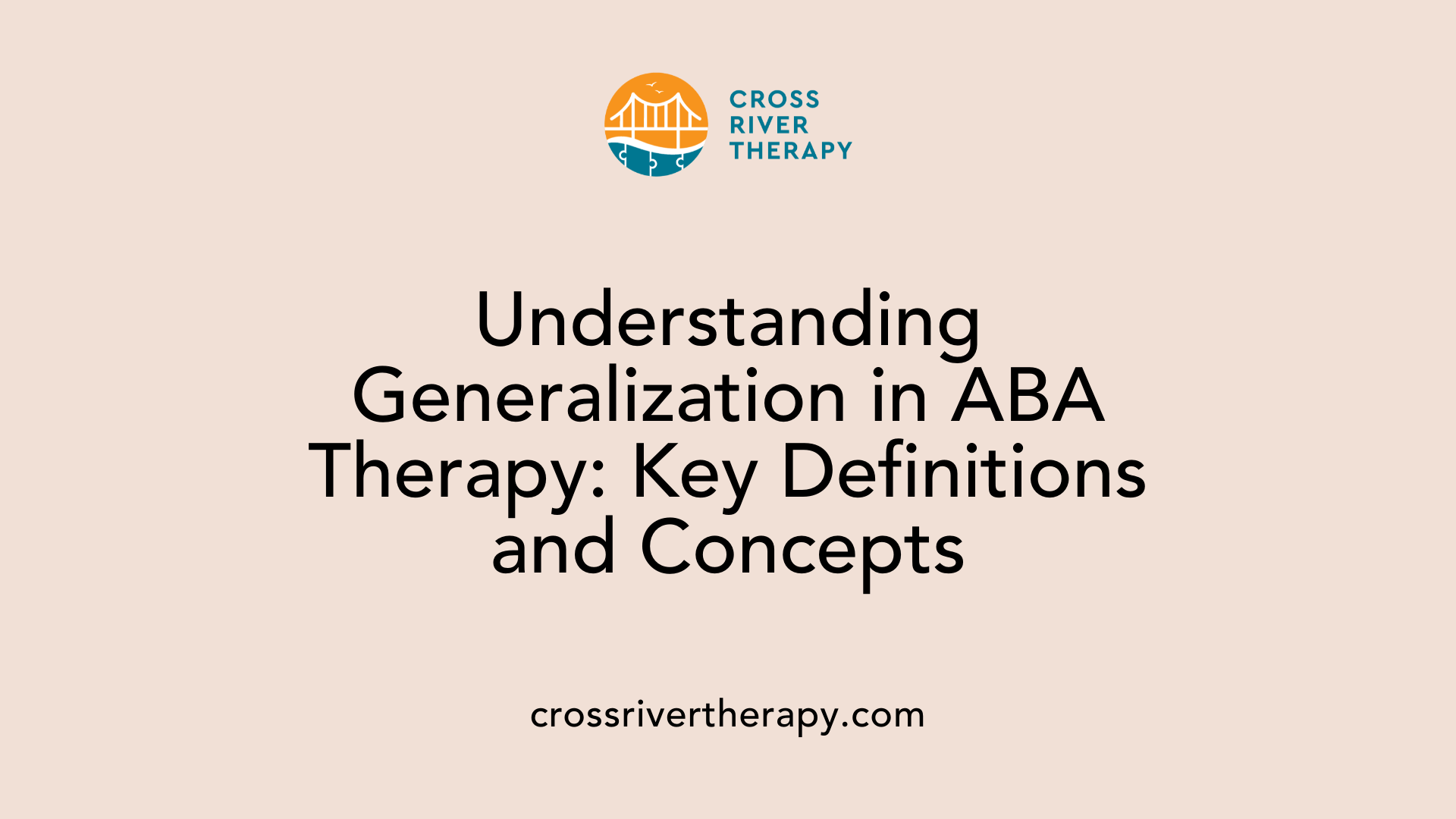
What is generalization in ABA therapy?
In Applied Behavior Analysis (ABA), generalization refers to the learner's ability to apply skills learned in one context to different situations, settings, and people. This critical aspect of ABA therapy is essential for ensuring that the skills children acquire within a therapeutic environment can effectively translate to their everyday lives.
Types of Generalization
Generalization can be categorized into three main types:
Stimulus Generalization
- This occurs when a child responds similarly to different stimuli. For example, a child taught to identify red blocks may also recognize red apples as similar items.
Response Generalization
- This allows the individual to use learned skills in various ways. For instance, a child might learn to say "please" when requesting a toy and later apply the same principle to ask for help or food.
Skill Maintenance
- This involves retaining previously learned skills over time without needing continual reinforcement. A child who has mastered tying shoelaces should be able to do so independently months later, regardless of setting.
Application in Different Contexts
Generalization strategies are employed to facilitate the transfer of skills across a multitude of environments. Incorporating varied teaching settings, engaging multiple instructors, and using naturalistic techniques enhance the likelihood that skills will be successfully generalized.
For example, practicing social skills in the home, at school, and within the community can help a child adapt their behavior as needed, reinforcing both independence and confidence.
This dynamic approach promotes the continual application of learned skills, ensuring that children can navigate the complexities of their environments effectively.
Implementing Best Practices for Skill Generalization
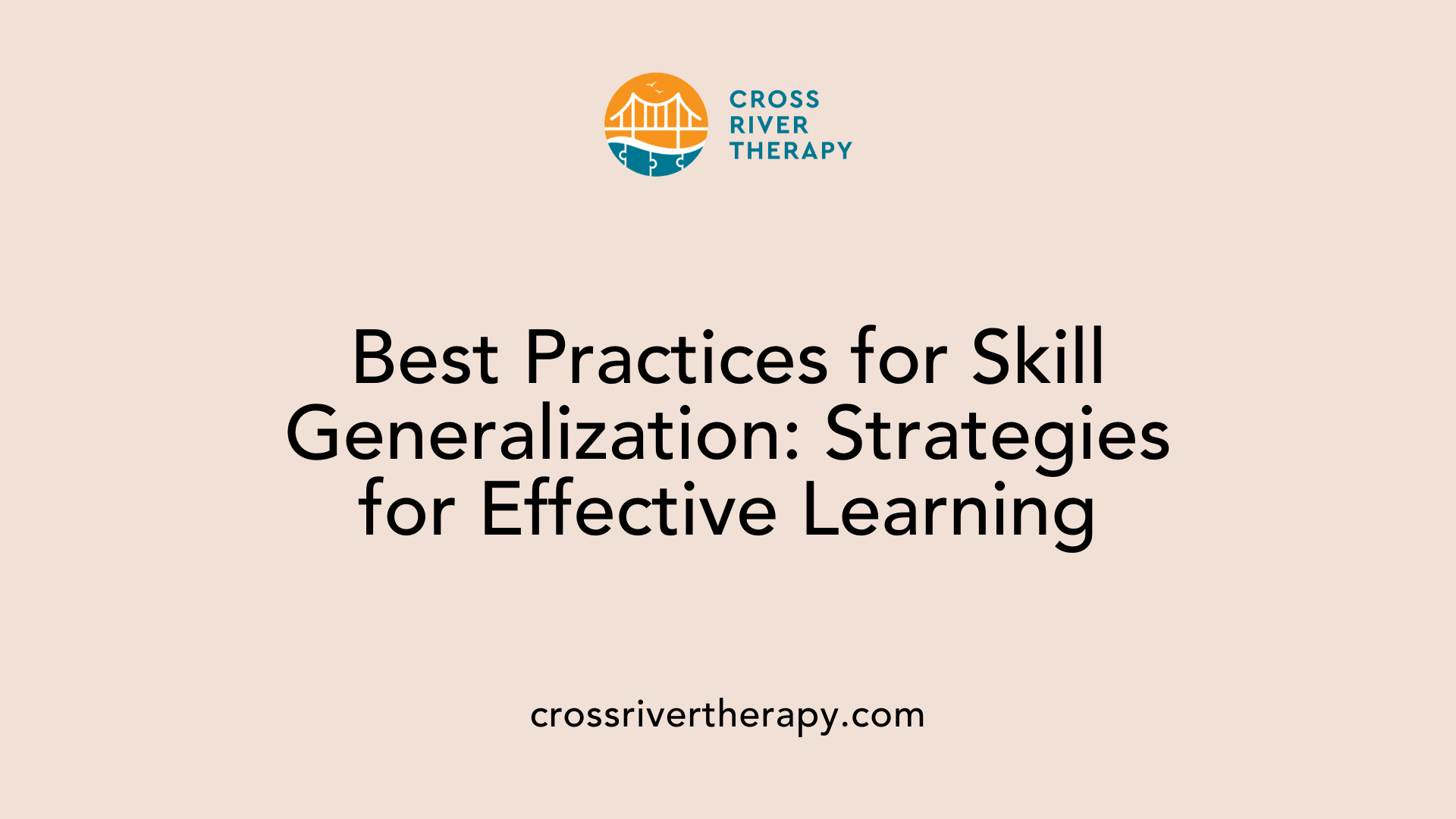
What are best practices for implementing skill generalization in different environments?
Best practices for skill generalization involve several strategic teaching methods that emphasize real-world applications. One effective approach is Natural Environment Training (NET), where skills are taught in contexts that mimic the learner's everyday life. This method ensures that individuals can transfer skills learned during therapy to real-world situations, enhancing their ability to interact in various environments such as home and school.
In addition to NET, the use of multiple stimuli during learning plays a crucial role. By varying the stimuli and the instructors involved, learners are better equipped to apply their skills to different contexts and people. For instance, engaging a variety of caregivers in practice sessions prepares clients to respond to various communication styles and environments, facilitating broader skill application.
Furthermore, it's vital to develop generalization plans that outline specific settings, stimuli, and persons involved in skill implementation. These plans detail how to introduce new environments gradually while emphasizing the importance of context.
Engaging parents and caregivers in practice reinforces skills learned in therapy. Their involvement not only solidifies learning but also helps maintain skills over time, promoting independence.
Lastly, techniques like sequential modification and training loosely can aid in enhancing the transfer of learned skills by relating new situations to previously mastered contexts. Employing positive reinforcement strategies during practical applications encourages continued practice and mastery of skills.
Through these approaches, ABA therapists foster an environment conducive to skill generalization, ensuring learners can effectively apply their skills across diverse real-life scenarios.
Achieving Response and Stimulus Generalization
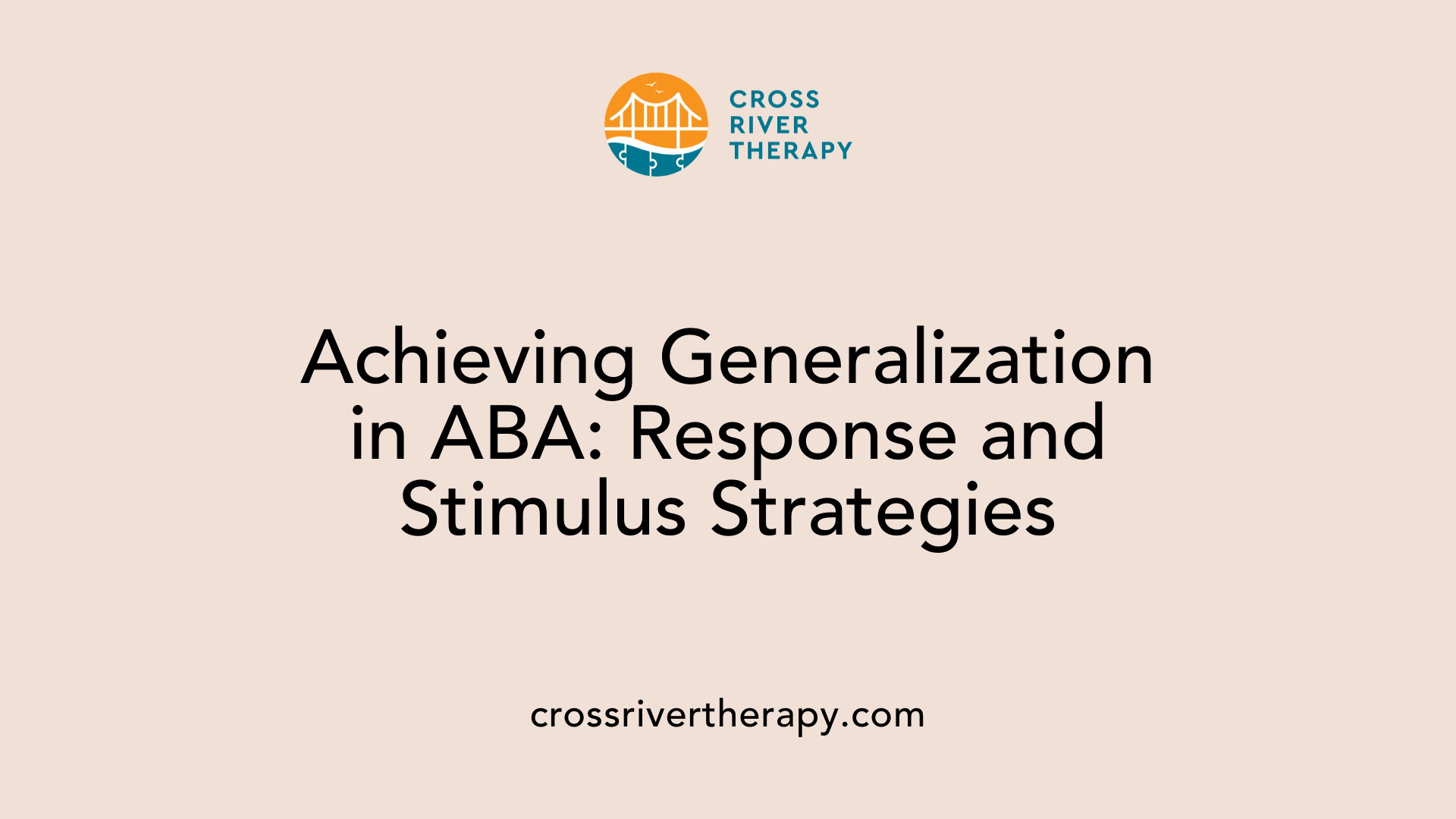
How Can Response and Stimulus Generalization Be Achieved in ABA Therapy?
Response and stimulus generalization are pivotal components in ABA therapy, allowing individuals to display learned behaviors in varied contexts. Response generalization occurs when a learner employs multiple behaviors in response to a single stimulus. For example, a child might use skills learned for making a request for food in different settings, such as asking for a snack at home or in a social environment.
Conversely, stimulus generalization refers to the learner’s ability to respond similarly to different stimuli. For instance, when a child is taught to identify different colored blocks, they should be able to apply this skill to distinguish between various objects of different colors outside of the therapy session.
To effectively promote these types of generalization, several strategies can be utilized:
Diverse Learning Environments: Training should occur in multiple settings, like home, school, and community spaces. This variety helps learners adapt their responses to different contexts.
Multiple Materials and Contexts: Incorporating various teaching materials fosters adaptability. Exposing children to different types of stimuli—like various tree species during an outdoor lesson—enhances their ability to generalize skills across similar but distinct situations.
Naturalistic Teaching Strategies: Methods such as incidental teaching embed learning in everyday situations, enabling real-life applications of skills. These strategies bolster both response and stimulus generalization by creating realistic opportunities for practice.
Collaborative Practice: Involving caregivers and educators in the learning process reinforces skill application outside of the therapy setting. This supportive collaboration provides consistency, prompting children to generalize their skills effectively.
By systematically implementing these strategies, practitioners can significantly enhance the likelihood of learners applying their skills in real-world situations.
Strategies for Promoting Generalization
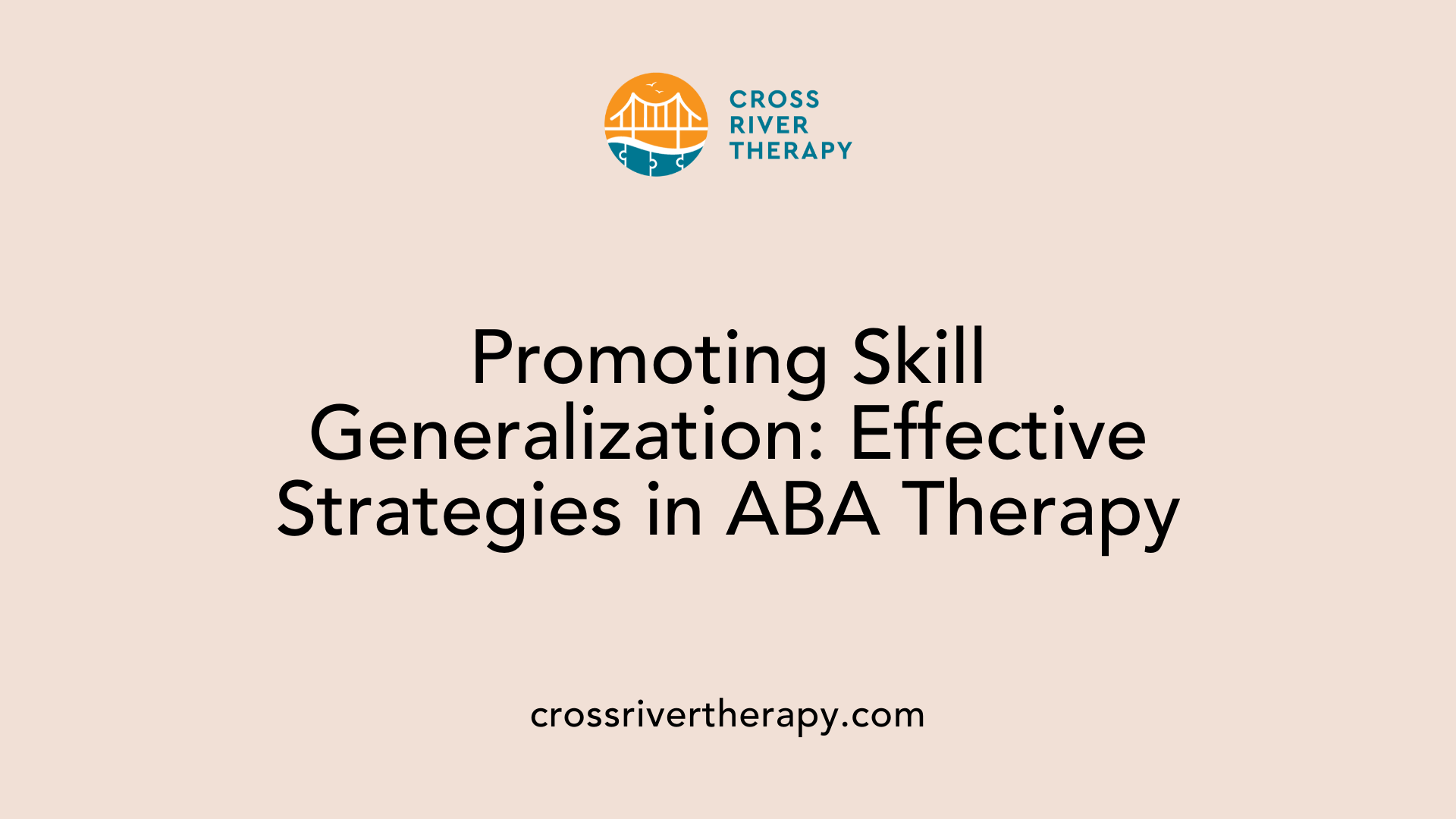
What are some strategies for promoting generalization in ABA therapy?
Promoting generalization in Applied Behavior Analysis (ABA) therapy is essential for ensuring that learned skills are transferable to real-world settings. Several effective strategies can enhance this process.
Teaching in Various Settings: Conducting sessions in different environments—like homes, schools, and community spaces—helps individuals practice skills in diverse contexts. This approach makes it more likely that they will apply these skills outside of therapy.
Natural Environment Training (NET): NET is a teaching method that focuses on teaching skills in their natural settings. By allowing learners to engage in real-life situations where the skills are needed, they can develop a better understanding and ability to generalize the learned behaviors.
Indiscriminable Contingencies: This technique involves varying the timing and frequency of reinforcement to keep learners engaged. By creating an unpredictable reinforcement schedule, learners are more likely to persist in using their skills across different situations, enhancing generalization.
Incorporating these strategies can help learners adapt their skills across various environments, leading to improved independence and effectiveness in their daily lives. Regular collaboration between therapists, educators, and caregivers is vital for sustaining these efforts and monitoring progress, ensuring that the skills acquired are not only practiced but also retained over time.
The Importance of Teaching Skills in Varied Contexts
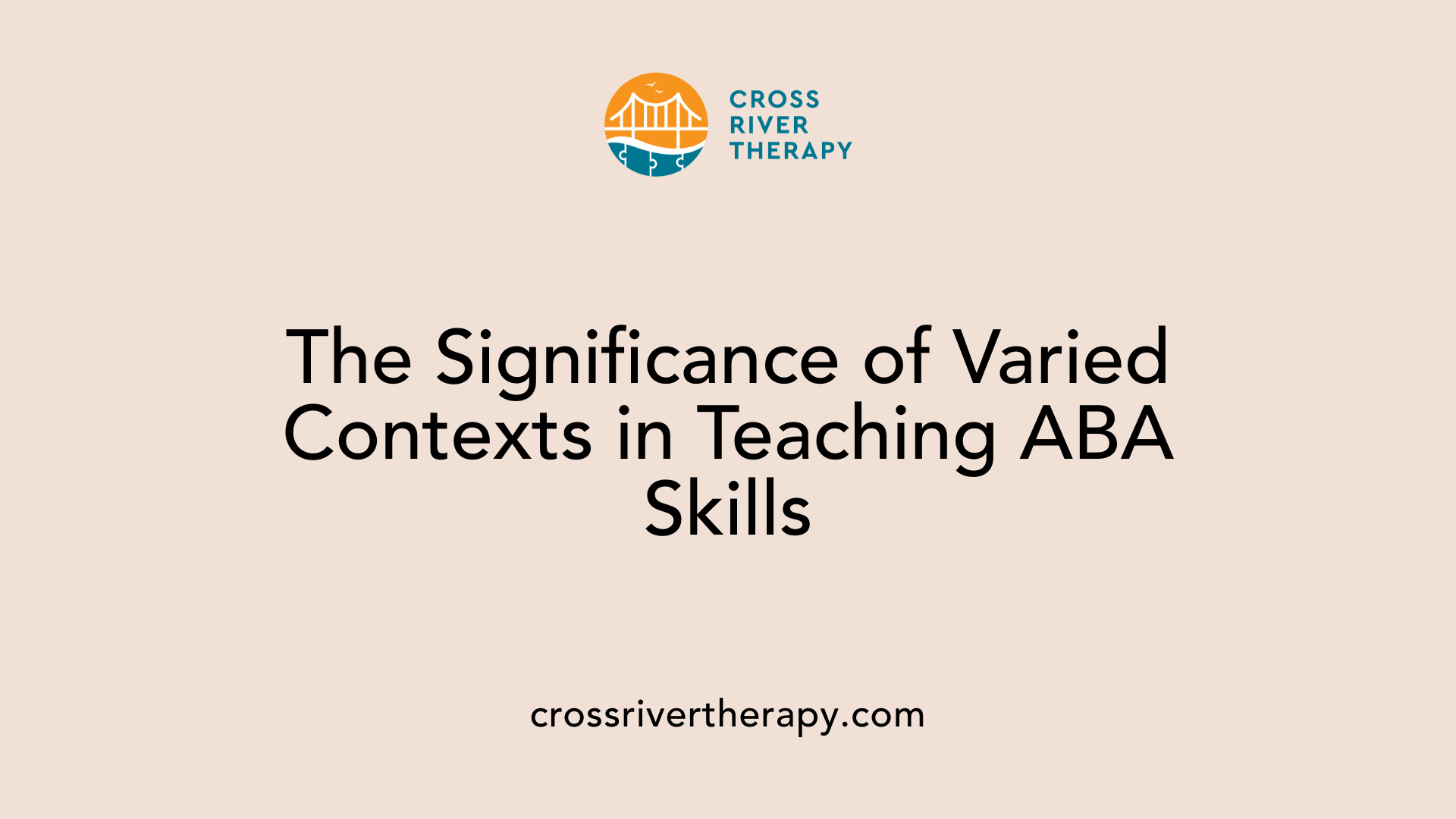
Why is it important to teach ABA skills in varied contexts?
Teaching ABA skills in varied contexts is essential for promoting generalization. This approach allows learners to apply skills across different settings, people, and situations. For example, skills learned in therapy should be transferable to real-life scenarios at home and school. This adaptability increases the likelihood that these skills will be retained and effectively utilized in everyday life.
Practicing in multiple environments helps learners develop a comprehensive understanding of how to apply their skills in diverse circumstances. When children practice skills with different instructors and in various settings, they become more adept at navigating social cues and interactions that may vary depending on the context.
The role of caregivers in skill application
The involvement of caregivers is critical in this process. Parents and teachers play a vital role by reinforcing the skills learned in therapy. Their active participation in practice sessions helps children generalize skills beyond the therapy room, supporting the transfer of learning into naturalistic settings. Caregivers can provide consistent practice opportunities, thereby enhancing skill retention and application.
Promoting independence in autism
the ultimate goal of these strategies is to foster independence in individuals with autism. By ensuring that skills are practiced across various contexts and reinforced by caregivers, learners gain confidence in their abilities. This independence empowers them to navigate their environments more effectively, using the skills they have acquired in therapy to face real-world challenges without constant supervision.
Collaborative Efforts for Ultimate Success
Involvement of multiple caregivers
Engaging multiple caregivers in the ABA process is vital. Their active participation ensures that skills practiced during therapy are consistently reinforced at home and in school, significantly boosting generalization efforts.
Community integration
Integrating community activities into learning sessions allows individuals to practice their skills in real-life settings. This exposure aids in applying learned behaviors effectively outside the therapy context, enhancing overall skill retention.
Feedback mechanisms
Implementing robust feedback mechanisms through praise and support encourages learners to apply their skills across various situations. This reinforcement is crucial in maintaining motivation and fostering independence as they navigate new environments.
Promoting Lifelong Learning and Adaptability
Ensuring that skills learned in ABA therapy can be applied to everyday situations is crucial for the long-term success and independence of individuals with autism. By incorporating comprehensive strategies for generalization, involving varied teaching environments, and engaging caregivers, ABA practitioners can significantly enhance a learner’s ability to adapt and thrive beyond the therapy sessions. These efforts not only improve the quality of life for individuals with autism but also empower them to participate more fully and confidently in their communities.
References
- How to Promote the Generalization of Skills in ABA Therapy
- Generalization: The Key to Meaningful Programming in ABA
- Strategies for Generalizing ABA Skills Across Settings
- Generalization: An ABA Technique - Golden Care Therapy
- Enhance Your Child's Skills in Various Settings with Generalization ...
- ABA Generalization Strategies
- [PDF] Seven Strategies to Promote Generalization - AWS
- Strategies for Promoting Generalization of Skills in ABA Therapy
- Generalization in ABA Therapy for Skill Expansion



